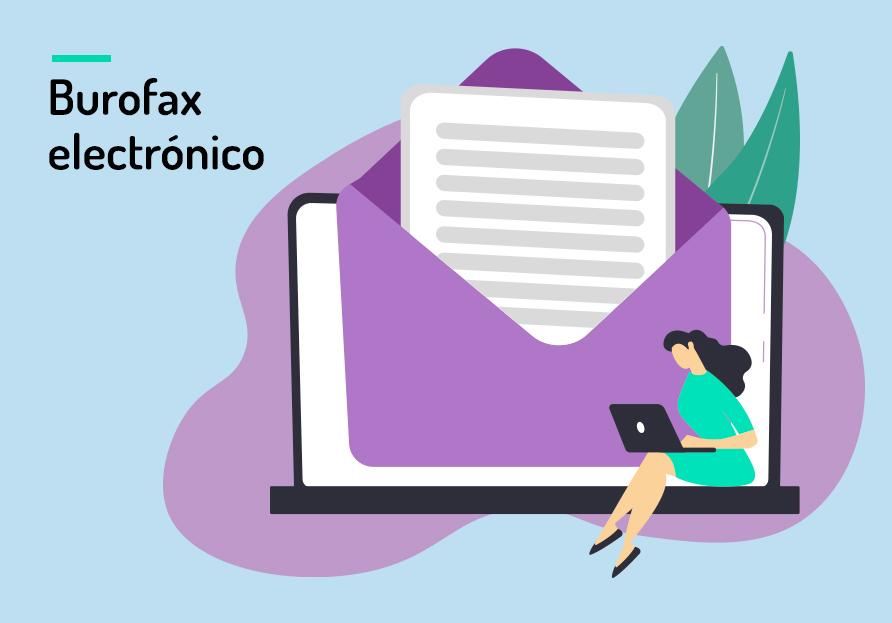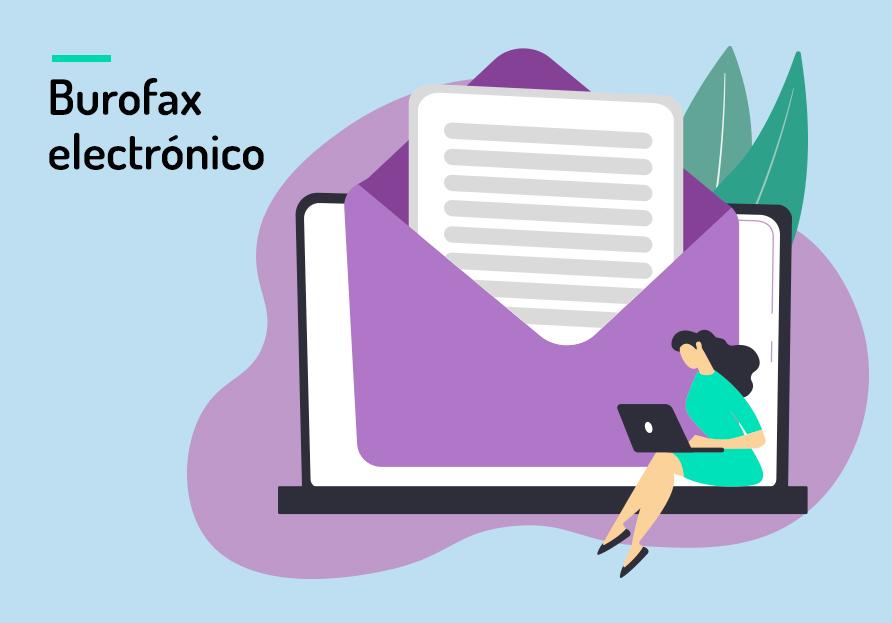
What is an electronic bureaufax
The electronic bureaufax is a secure and efficient way of sending documents and information in the digital era, which offers advantages such as cost and paper reduction, as well as streamlining procedures.
The electronic bureaufax is used in cases of claims for invoices, contracts and corporate communications, and provides security and protection in electronic communications.
They are sent through platforms managed by trusted service providers, such as the MailComms group, which guarantee the legal validity and security of electronic communications. In addition to legal certainty, quality suppliers add greater efficiency and delivery success, and avoid risks such as fake shipments that can lead to malware infections.
An electronic bureaufax is a secure and efficient way of sending documents in the digital age, which also offers better traceability of the sensitive documents sent.
Definition and concept
The electronic bureaufax is used as an alternative to online or paper bureaufaxes sent through the postal channel.
It is a certified digital communication, sent by email, SMS or WhatsApp, which allows the receiver to access, through a link, the document indicated by the sender. To get to the document, the receiver will have to authenticate himself and will be asked for the acceptance or electronic signature that will prove the receipt of the shipment.
> Discover the different features offered by the electronic bureaufax and the online postal bureaufax.
The role of the bureaufax in the digital era
In an increasingly digitalized world, the online bureaufax has become a fundamental tool to guarantee the security and validity of communications. In addition, it offers advantages over the traditional bureaufax, such as immediacy, speeding up procedures and cost savings. It also has environmental benefits by reducing the use of paper and the carbon footprint produced during transportation.
Advantages of the electronic bureaufax over paper
- Cost savings compared to paper bureaufax.
- Reduction of paper consumption and contribution to environmental protection.
- Agility in the procedures thanks to its immediacy.
- Guarantee of legal validity comparable to that of a paper bureaufax, provided that the electronic bureaufax complies with certain technical requirements.
- Agility and legal security when managing your company’s contracts with suppliers, employees and customers.
- The automated sending of bureaufaxes facilitates the activity of departments that need reliability, such as the Legal or Financial areas of companies.
- The online burofax minimizes risks in the management of company contracts.
The electronic bureaufax offers these benefits and some more compared to the traditional paper bureaufax, making it an increasingly used option in the business and legal environment.
> Learn more about the burofax and its role in corporate compliance management.
> And discover the business benefits of choosing online postal bureaufax over postal mail.
Legal validity of the electronic bureaufax
Legal recognition of electronic communication
Electronic communication, including electronic bureaufax, has been legally recognized in Europe and many other countries as a valid form of information exchange.
The European Regulation 910/2014, better known as eIDAS, establishes for the certified electronic delivery service the legal framework to be applied for all electronic communications:
“Art. 43: Legal effect of a certified electronic delivery service:
- Data sent and received through a certified electronic delivery service shall not be denied legal effect or admissibility as evidence in legal proceedings solely on the grounds that it is in electronic form or does not meet the requirements of qualified certified electronic delivery service.”
Electronic signature and its legal validity
One of the fundamental components of the electronic bureaufax is the electronic signature, which plays a crucial role in the legal validity of the documents sent. The electronic signature serves to justify the delivery of the document to the addressee. It must be technically robust enough to ensure that the recipient is really who he or she claims to be. This point is fundamental, since only in the case of establishing identification processes that allow to verify unequivocally the sender we will be able to equate a postal bureaufax with an electronic bureaufax, since in this way its delivery will not be put in doubt.
Proof and evidence in case of legal dispute
In the event of a legal dispute, the electronic bureaufax provides solid proof and evidence to support the communication made. The detailed and certified information of the shipment, content, authentication, acceptance or signature and receipt, can be presented as evidence in a judicial process. This provides security and peace of mind to the parties involved, by having electronic backup documentation. Its probative value is greater if it is sent through the tool of a qualified provider of trusted electronic services in the form of certified electronic delivery, such as the MailComms group, as accredited by the Ministry of Economic Affairs and Digital Transformation.
How the electronic bureaufax works
Electronic shipping and delivery process
The electronic bureaufax simplifies the procedure for sending documents by being completely digital through a platform managed by a qualified trusted service provider, such as the companies of the MailComms group and its CertySign platform. In this type of application, once the sending channel (sms, email or WhatsApp) has been selected, the participants’ data is entered and the message is written clearly and precisely. Next, attach the files that you want to send, whether they are invoices, contracts or any other relevant documentation that you want to make available to the recipient.
After completing these steps and after reviewing content and addresses, it is time to submit the information.
Once sent, the addressee will receive a communication indicating that he/she has received a certified notice. In order to examine it, you will have to access through a link. And this will only be allowed in the event that it is correctly authenticated and accepted or signed for receipt.
The trusted service provider issues a certificate containing the trace of the shipment, captures the evidence and attests to the content sent. The provider also ensures that the communication is secure, which provides legal support in case of dispute.
Digital certificates and their importance in electronic bureaufaxes
These certificates guarantee the identification and authenticity of the parties involved in the electronic communication. The use of reliable digital certificates ensures the integrity and security of the transmitted information.
Thanks to these certificates, identity theft and possible manipulation of the documents sent are avoided. This guarantees the validity and authenticity of electronic bureaufaxes, providing confidence and legal certainty.
Aspects to consider before sending an electronic bureaufax
Verification of the entity authorized for shipment
Before sending an electronic bureaufax, it is essential to make sure that the entity through which it will be sent is authorized and has the corresponding certificates. This guarantees the legal validity of the communication and avoids possible problems in the future. It is important to verify the reputation and reliability of the trusted electronic delivery service provider to ensure that it complies with all applicable regulations.
There are two types of trust service providers, qualified and unqualified. The difference between qualified or non-qualified lies in the fact that, in the case of qualified ones, their shipping methods have been audited by the Ministry of Economic Affairs and Digital Transformation , complying with the regulations described in the European Regulation 910/2014 and its technical standards.
A qualified trusted service provider offers the peace of mind of knowing that their processes have been verified and comply with EU regulations, such as the eIDAS regulation, which provides a higher degree of legal protection than using the services of an unqualified provider, who may or may not be compliant.
Protection against fake mass mailings and malware
In the digital age it is crucial to be alert to possible mass mailings of fake electronic bureaufaxes containing malware. To avoid security problems, it is recommended to use platforms from recognized authorized service providers that offer adequate protection and security measures. This minimizes the risk of receiving fraudulent messages and protects the integrity of the information transmitted.
Costs and variations according to authorized service provider
Prices for electronic bureaufax may vary depending on the authorized service provider selected. Before shipping, it is advisable to research and compare the rates offered by different suppliers to obtain the best balance between price and quality of service.
It is important to keep in mind that, although electronic bureaufaxes are usually cheaper than paper bureaufaxes, it is necessary to carefully evaluate the conditions and services included in each offer in order to make an informed decision.
Cases of use of the electronic bureaufax
The electronic bureaufax has several practical applications in different areas, offering security and confidence in communication. These are some of the most common use cases.
Sending invoices and legal documents
The electronic bureaufax is an efficient solution for sending invoices and other legal documents quickly and securely. Allows to notify the parties involved about contractual obligations and payment deadlines in a reliable manner, avoiding possible disputes or delays.
Ensuring secure corporate communications
In the corporate environment, the electronic bureaufax is a reliable tool for communication. This method can be used to send important messages, communiqués and official communications, with guaranteed delivery and authenticity of the content, especially in sensitive or delicate situations.
Utility in contracts and commercial transactions
In the field of contracts and commercial transactions, the electronic bureaufax plays a crucial role in providing evidence of the date of delivery and the content sent. It is especially useful in commercial agreements, leasing contracts and purchase and sale of goods and services, as it protects the interests of the parties involved.
- Allows you to send invoices and legal documents quickly and securely.
- Ensures authenticity and delivery of important corporate communications.
- Provides evidence of delivery date and content in commercial transactions and contracts.
The role of the electronic bureaufax in digital transformation
In the context of digital transformation, the electronic bureaufax is crucial in the optimization and streamlining of business processes due to its immediacy. With its implementation, organizations experience significant benefits in terms of reduction of paper use, efficiency in procedures and formalities, and improved security in electronic communications.
Contribution to the reduction of paper use
The electronic bureaufax provides a sustainable solution by significantly reducing the need for paper documents. Sending communications electronically eliminates the printing, physical storage and handling of paper documents, as well as the carbon footprint associated with their handling and transportation. This not only reduces the costs associated with paper use, but also contributes positively to the environment by reducing deforestation, natural resource consumption and greenhouse gas emissions.
Agility and efficiency in business procedures and formalities
The implementation of the electronic bureaufax speeds up business procedures and formalities and eliminates the delay associated with sending and receiving paper documents. It also ensures greater security and traceability in the delivery of shipments. This streamlines internal business processes, facilitates decision making and improves efficiency in the management of important documents.
Benefits for the security of electronic communications
The electronic bureaufax provides a high level of security in electronic communications.
Provided that digital certificates identifying the parties are used and that it incorporates a robust electronic signature, which guarantees the authenticity and integrity of the documents sent, it can be equated to a postal bureaufax. This avoids the possibility of manipulation or falsification. This builds confidence in both the sender and the recipient and ensures that communications are legal and valid in the event of litigation (also find out how to use e-mails as evidence in court). In addition, content certification offers greater protection and support for the communication of sensitive information.
